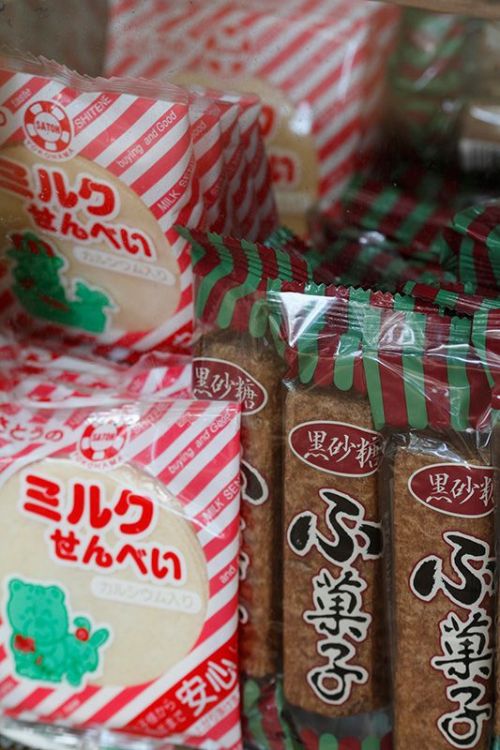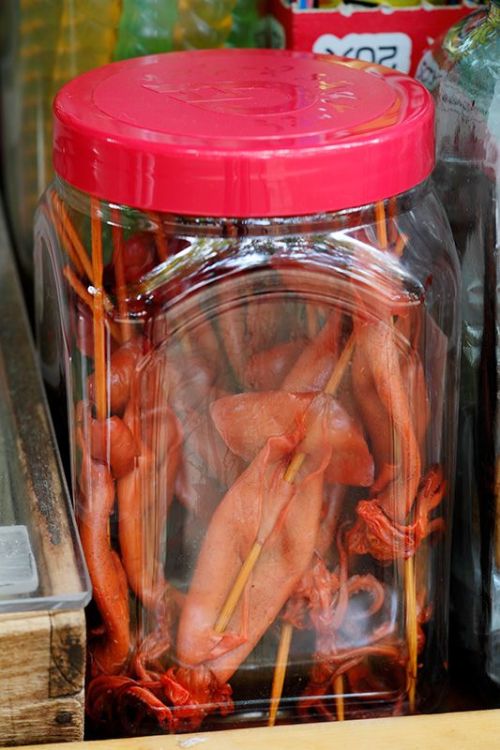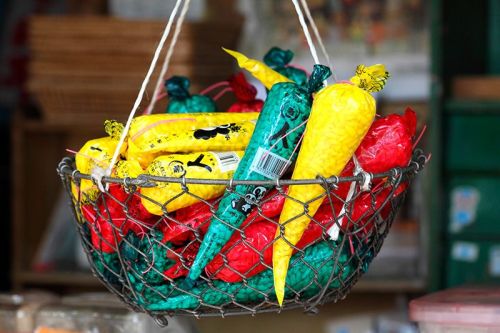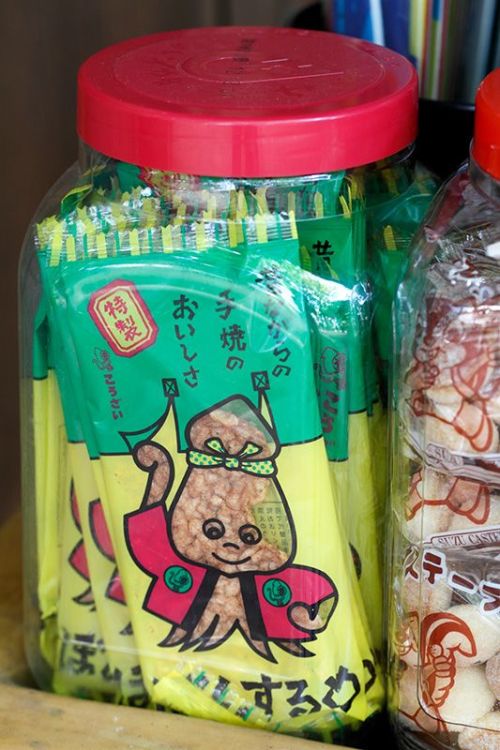During the Edo period (1603–1868), the more expensive types of candy, made with white sugar, w
During the Edo period (1603–1868), the more expensive types of candy, made with white sugar, were called jōgashi. In contrast, the cheaper candies made from coarse grain or starch and consumed by the common people were called dagashi. The types of dagashi that people still eat today were mostly created after World War II. Because dagashi were intended for young children, candy makers came up with various ways to keep prices low, such as selling individual pieces of candy or gum. The shops that sell dagashi, called dagashiya, commonly offer such items as spiced or sweetened dried seafood, candy made from starch- or rice-based sweeteners, and processed foods with a long shelf life like colored or seasoned fruits of vegetables. Dagashiya were popular among kids for offering a wide selection of low-priced items as well as raffles and candies with chances to win prizes. The stores could be found everywhere in Japan until the 1980s, but began to disappear as snack makers diversified their product lineups and convenience stores increased in number. -- source link
Tumblr Blog : nippon-com.tumblr.com
#dagashi#japanese snacks









